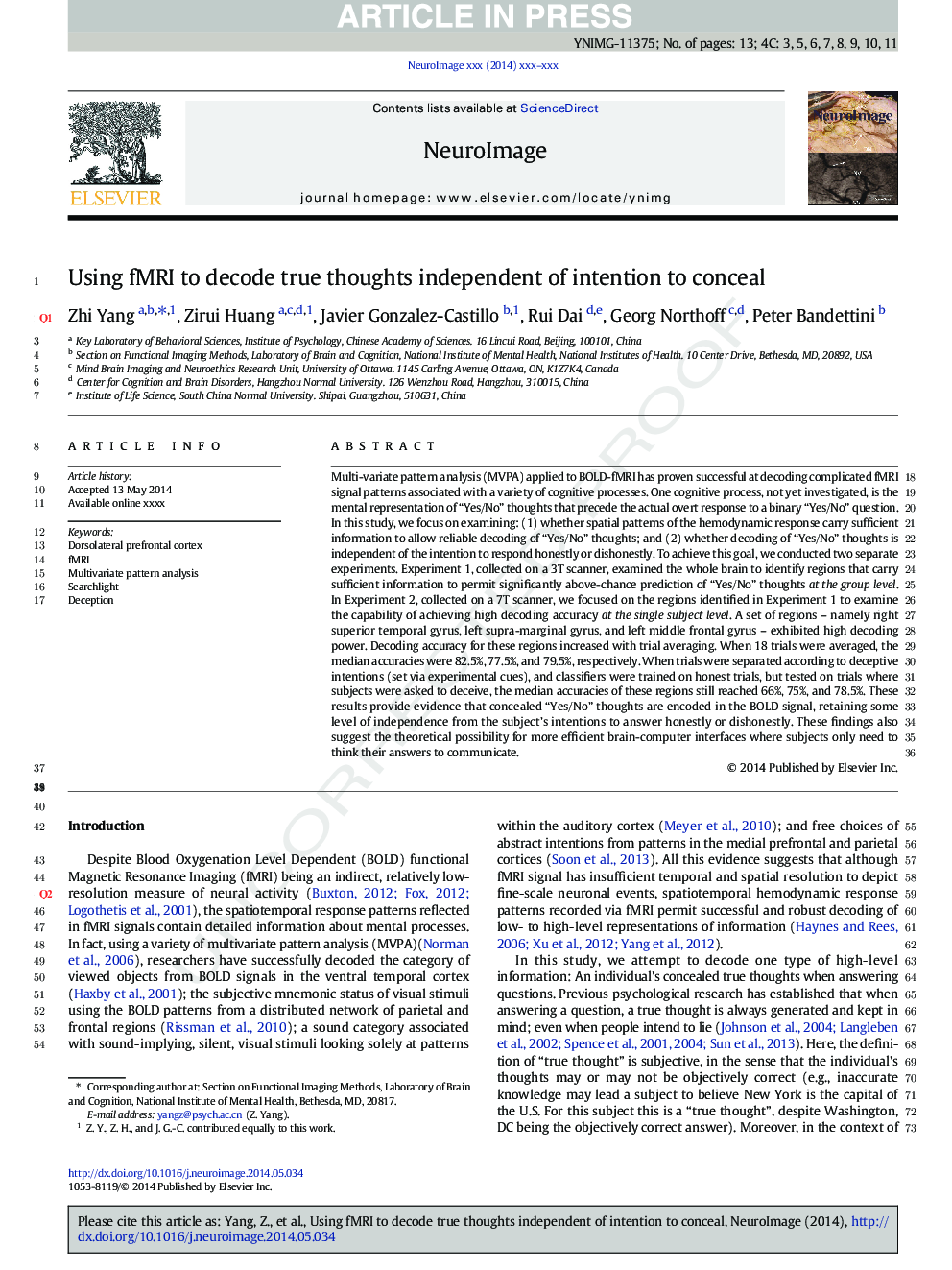| کد مقاله | کد نشریه | سال انتشار | مقاله انگلیسی | نسخه تمام متن |
|---|---|---|---|---|
| 6027047 | 1580907 | 2014 | 13 صفحه PDF | دانلود رایگان |
عنوان انگلیسی مقاله ISI
Using fMRI to decode true thoughts independent of intention to conceal
دانلود مقاله + سفارش ترجمه
دانلود مقاله ISI انگلیسی
رایگان برای ایرانیان
کلمات کلیدی
موضوعات مرتبط
علوم زیستی و بیوفناوری
علم عصب شناسی
علوم اعصاب شناختی
پیش نمایش صفحه اول مقاله

چکیده انگلیسی
Multi-variate pattern analysis (MVPA) applied to BOLD-fMRI has proven successful at decoding complicated fMRI signal patterns associated with a variety of cognitive processes. One cognitive process, not yet investigated, is the mental representation of “Yes/No” thoughts that precede the actual overt response to a binary “Yes/No” question. In this study, we focus on examining: (1) whether spatial patterns of the hemodynamic response carry sufficient information to allow reliable decoding of “Yes/No” thoughts; and (2) whether decoding of “Yes/No” thoughts is independent of the intention to respond honestly or dishonestly. To achieve this goal, we conducted two separate experiments. Experiment 1, collected on a 3T scanner, examined the whole brain to identify regions that carry sufficient information to permit significantly above-chance prediction of “Yes/No” thoughts at the group level. In Experiment 2, collected on a 7T scanner, we focused on the regions identified in Experiment 1 to examine the capability of achieving high decoding accuracy at the single subject level. A set of regions - namely right superior temporal gyrus, left supra-marginal gyrus, and left middle frontal gyrus - exhibited high decoding power. Decoding accuracy for these regions increased with trial averaging. When 18 trials were averaged, the median accuracies were 82.5%, 77.5%, and 79.5%, respectively. When trials were separated according to deceptive intentions (set via experimental cues), and classifiers were trained on honest trials, but tested on trials where subjects were asked to deceive, the median accuracies of these regions still reached 66%, 75%, and 78.5%. These results provide evidence that concealed “Yes/No” thoughts are encoded in the BOLD signal, retaining some level of independence from the subject's intentions to answer honestly or dishonestly. These findings also suggest the theoretical possibility for more efficient brain-computer interfaces where subjects only need to think their answers to communicate.
ناشر
Database: Elsevier - ScienceDirect (ساینس دایرکت)
Journal: NeuroImage - Volume 99, 1 October 2014, Pages 80-92
Journal: NeuroImage - Volume 99, 1 October 2014, Pages 80-92
نویسندگان
Zhi Yang, Zirui Huang, Javier Gonzalez-Castillo, Rui Dai, Georg Northoff, Peter Bandettini,